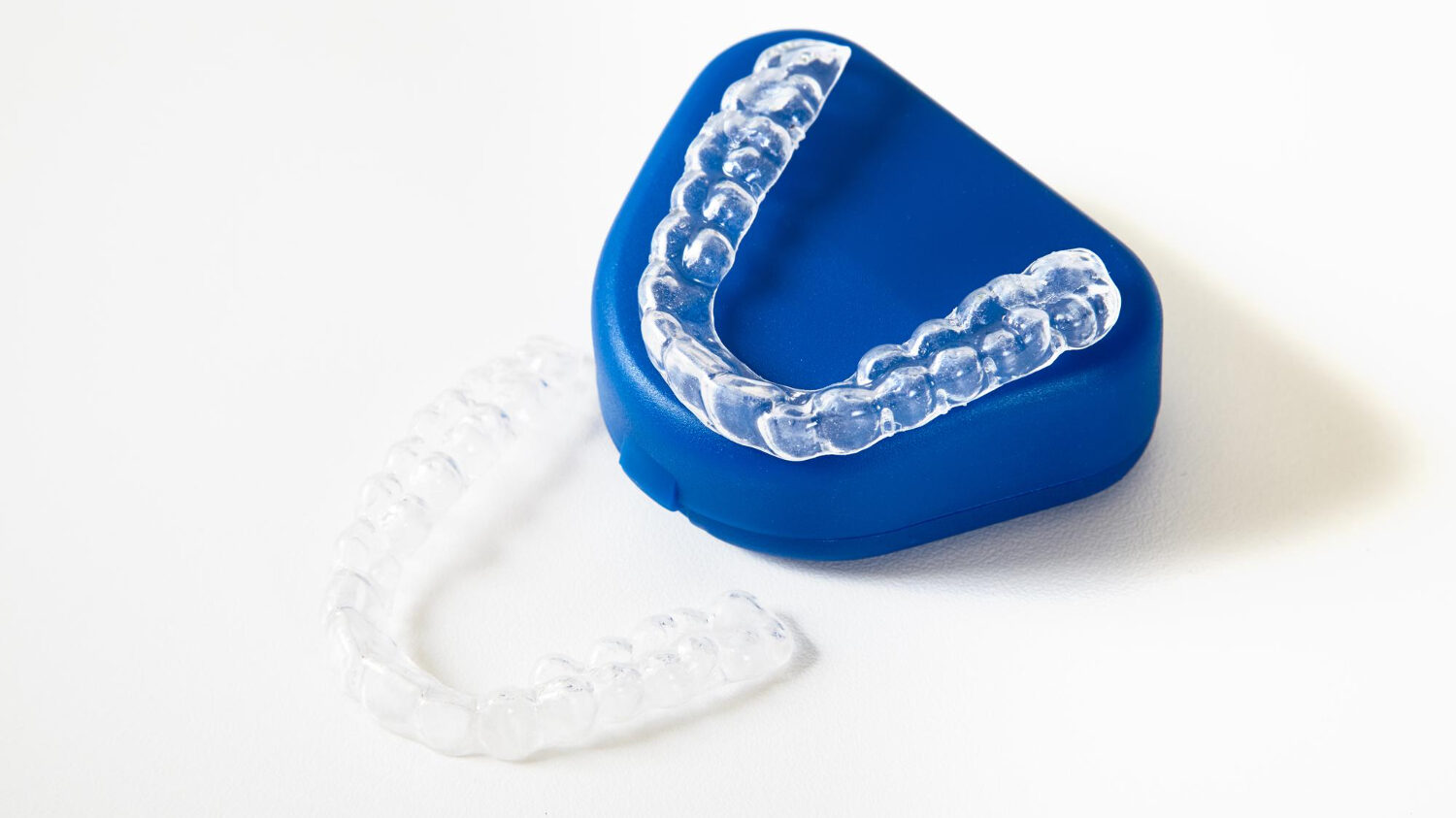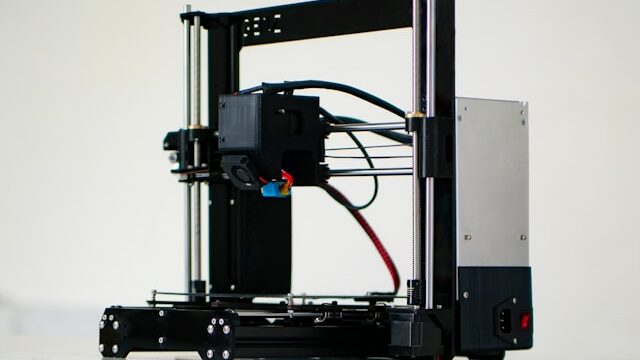Do you want to learn more about dental 3D printing and its specificities? At Imprimy.com, we are here to answer all your questions.
Dental 3D printing allows you to create prostheses and anatomical models with increased precision and customization as part of providing dental care.

What is the history and evolution of dental 3D printing?
Dental 3D printing has evolved since the 1980s with stereolithography (SLA), progressing through faster technologies such as laser sintering, enabling today the production of prosthetics, aligners, and custom implants with precision and efficiency.
- What is the history and evolution of dental 3D printing?
- What are the applications of 3D printing in dentistry?
- What are the advantages of dental 3D printing?
- What are the challenges and limitations of dental 3D printing?
- What are the future prospects of dental 3D printing?
- Conclusion: Dental 3D printing
The origins of 3D printing
3D printing, a revolutionary technology, has its origins in the 1980s. It was Charles Hull who invented stereolithography, a method that creates objects layer by layer from digital data.
This innovation marked the birth of additive manufacturing, paving the way for numerous industrial and medical applications.
Initially used for rapid prototyping, 3D printing quickly evolved to include various materials and sophisticated techniques.
Today, it plays a crucial role in many sectors, including the dental field.
The introduction of 3D printing in the dental field
3D printing entered the dental field in the early 2000s, revolutionizing traditional practices. Thanks to its precision and flexibility, this technology makes it possible to create crowns, bridges, and even custom-made aligners.
Dentists and dental technicians can now design personalized solutions for their patients, thus improving the quality of care. The use of biocompatible materials ensures perfect and long-lasting integration in the oral cavity.
The evolution of technologies related to dental 3D printing
The evolution of technologies related to dental 3D printing has seen major advances in recent years. 3D printers have become faster, more precise, and capable of working with a wide range of biocompatible materials.
The integration of computer-aided design (CAD) and digital tomography enables extremely detailed modeling.
Advances in software and intraoral scanners have also simplified procedures, making treatments more accessible.
These innovations continue to transform dentistry, offering increasingly effective and personalized solutions.
What are the applications of 3D printing in dentistry?
The applications of 3D printing in dentistry include the production of crowns, bridges, dental prosthetics, clear aligners, surgical guides, study models, and custom implants, thereby improving accuracy, patient comfort, and treatment speed.
3D printed dental prosthetics
Dental prostheses made using 3D printing represent a significant advancement in the field of dentistry. These prostheses, such as crowns, bridges, and dentures, are custom-made to fit perfectly with the patient’s anatomy.
The use of biocompatible materials ensures a harmonious and long-lasting integration in the mouth.
This technology not only improves comfort and functionality, but also significantly reduces manufacturing times.
In addition, 3D-printed prostheses offer a cost-effective solution compared to traditional methods.
3D printed orthodontics
Orthodontics has been transformed by the arrival of 3D printing, enabling more precise and personalized treatments. Clear aligners, custom-made using this technology, offer a discreet alternative to traditional metal braces.
3D scanners and modeling software make it possible to create appliances perfectly adapted to each patient’s dental morphology.
This approach not only reduces the duration of orthodontic treatment, but also improves patient comfort.
In addition, 3D printing enables the fast and cost-effective production of these devices, making orthodontic care more accessible.
Dental surgery and 3D printing
Dental surgery has been profoundly influenced by 3D printing, enabling more precise and less invasive procedures. 3D-printed surgical guides help surgeons plan and carry out complex procedures with great accuracy.
This technology is especially valuable for dental implants, where precision is crucial for the success of the treatment.
Moreover, 3D printing allows the creation of detailed anatomical models, facilitating preoperative preparation.
Education and training through dental 3D printing
3D printing plays a crucial role in dental education and training, providing innovative teaching tools.
Students and professionals can practice on realistic dental models, thus improving their practical skills.
This technology also makes it possible to simulate complex clinical cases, better preparing future practitioners for real-life challenges.
Dental schools are increasingly integrating 3D printing into their programs to enrich the learning experience.
What are the advantages of dental 3D printing?
The advantages of dental 3D printing include increased precision, cost reduction, faster manufacturing, customization of devices, better patient fit, and reduced waste.
Precision and customization in dental 3D printing
Dental 3D printing stands out for its precision and its ability to offer highly customized solutions.
Thanks to advanced technologies like stereolithography and laser sintering, it is possible to create dental devices tailored to the unique anatomy of each patient.
This personalization improves not only comfort and functionality, but also the effectiveness of treatments.
3D scanners and CAD software enable detailed modeling, ensuring accurate and reproducible results.
Moreover, this precision reduces errors and necessary adjustments, thus optimizing time and resources.
Cost reduction made possible by dental 3D printing
Dental 3D printing has enabled a significant cost reduction in the field of dentistry. By automating much of the manufacturing process, this technology lowers expenses related to labor and materials.
Prostheses and orthodontic devices can be produced in-house, eliminating the costs associated with outsourcing.
In addition, the precision of 3D printing minimizes errors and rework, resulting in further savings.
Finally, this technology allows dental clinics to offer high-quality care at more affordable prices.
The time savings provided by dental 3D printing
Dental 3D printing offers a considerable time saving in the manufacturing of dental devices. Unlike traditional methods, which can take weeks, 3D printing allows the production of crowns, bridges, and aligners in just a few hours.
This speed is due to the automation of processes and the elimination of intermediate steps.
Dentists can thus treat more patients and reduce waiting times for care.
Finally, this technology enables quick and precise adjustments, further optimizing the treatment time.
Improvement of patient comfort through dental 3D printing
Dental 3D printing has greatly contributed to improving patient comfort. Thanks to the customization of dental devices, they fit perfectly to the anatomy of each individual, reducing irritations and discomfort.
Custom-made aligners and prostheses offer a more pleasant experience in daily life.
Moreover, the precision of 3D printing minimizes the necessary adjustments, which reduces the time spent in the dental chair.
Finally, the materials used are designed to be lightweight and biocompatible, further enhancing patient well-being.
What are the challenges and limitations of dental 3D printing?
The challenges and limitations of dental 3D printing include the high cost of equipment, the need for specialized training, the variable durability of materials, strict regulatory standards, and limited precision for certain complex applications.
The high initial cost of dental 3D printing
The adoption of dental 3D printing can represent a high initial cost for clinics and dental laboratories. This investment includes the purchase of high-precision 3D printers, scanners, and specialized software.
Moreover, staff training to master these new technologies also requires financial resources.
However, despite these initial expenses, the long-term savings on materials and labor can justify this investment.
Finally, the improvement in the quality of care and patient satisfaction can also help offset these costs.
Training of staff required to perform dental 3D printing
The adoption of dental 3D printing can represent a high initial cost for clinics and laboratories. This investment includes the purchase of high-precision 3D printers, scanners, and specialized software.
Moreover, staff training to master these new technologies also requires additional resources.
However, despite this initial cost, the long-term savings and the improvement in the quality of care can justify this investment.
Professionals must evaluate the return on investment in terms of time savings, precision, and patient satisfaction.
Regulations and standards related to dental 3D printing
The regulations and standards governing dental 3D printing are essential to ensure the safety and effectiveness of the medical devices produced. Health authorities, such as the FDA in the United States and the CE marking in Europe, impose strict requirements for the approval of materials and processes used.
These regulations cover various aspects, including biocompatibility, sterilization, and device precision. Professionals must comply with these standards to ensure the quality and reliability of care provided.
Finally, these regulatory frameworks are constantly evolving to adapt to technological advances and new scientific discoveries.
Materials used in dental 3D printing
The materials used in dental 3D printing are specially designed to meet biocompatibility and durability requirements.
Among the most common are resins, ceramics, and metals such as titanium. These materials must be non-toxic and able to withstand the conditions of the oral cavity.
Composite resins are often used for crowns and bridges, while metals are preferred for implants.
Technological advances also allow the use of innovative materials, constantly improving the quality of dental devices.
What are the future prospects of dental 3D printing?
The future prospects of dental 3D printing include the development of new biocompatible materials, the integration of artificial intelligence for automated design, the fabrication of biological tissues such as gums and bone, and even more advanced customization of treatments.
Upcoming innovations in the field of dental 3D printing
Upcoming innovations in the field of dental 3D printing promise to further revolutionize dental care. Researchers are exploring the use of smart materials capable of reacting to changes in the oral cavity, such as pH or temperature variations.
The integration of artificial intelligence could enable even more precise planning and execution of treatments.
Moreover, advances in bioprinting could one day allow the printing of living dental tissues, paving the way for complete regeneration.
Finally, the continuous improvement of 3D printers in terms of speed and precision will make these technologies even more accessible and effective.
The impact of dental 3D printing on the healthcare market
Dental 3D printing has a significant impact on the healthcare market, especially in the dental sector.
It enables faster and more cost-effective production of dental devices, making care more accessible.
This technology also promotes innovation and personalization, thus improving the quality of treatments offered.
Companies that adopt 3D printing can differentiate themselves in the market by offering more precise and tailored solutions.
Finally, 3D printing drives market growth by attracting new investments and creating opportunities for startups and established companies.
Research and development in dental 3D printing
Research and development in the field of dental 3D printing are essential to advance this technology.
Scientists and engineers work on improving the materials used, seeking more durable and biocompatible options.
Innovations in software and hardware enable more precise designs and faster procedures.
Collaborations between universities, laboratories, and companies also drive innovation, leading to more effective clinical applications.
These ongoing R&D efforts are crucial to overcome current challenges and explore new possibilities in dental medicine.
Conclusion: Dental 3D printing
Dental 3D printing represents a major advancement in the field of dental medicine, offering innovative and personalized solutions.
It improves precision, reduces costs and lead times, while increasing patient comfort.
Materials and technologies are evolving rapidly, paving the way for new treatment possibilities.
Despite a high initial cost, the long-term benefits are undeniable for both professionals and patients.
In short, dental 3D printing is redefining the standards of dental care, promising a future where treatments will be even more effective and accessible.
Picture by Anastasia Kazakova from Freepik.
The articles published on Imprimy.com are for informational purposes only. They are intended to provide general advice and information related to 3D printing. Imprimy.com cannot be held responsible for the results obtained or the consequences arising from the application of the shared information. We recommend always checking the specific instructions for your hardware and materials before use.


